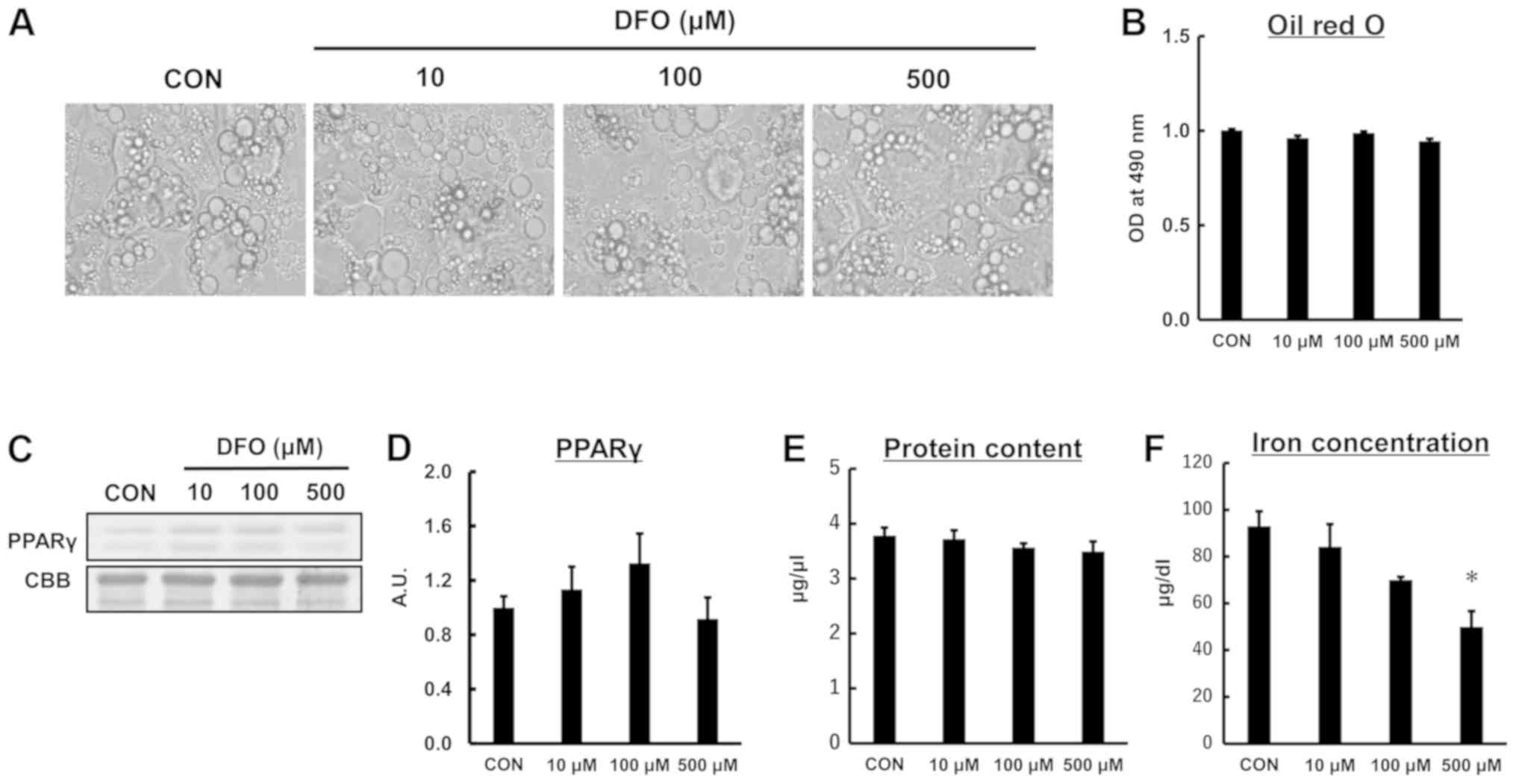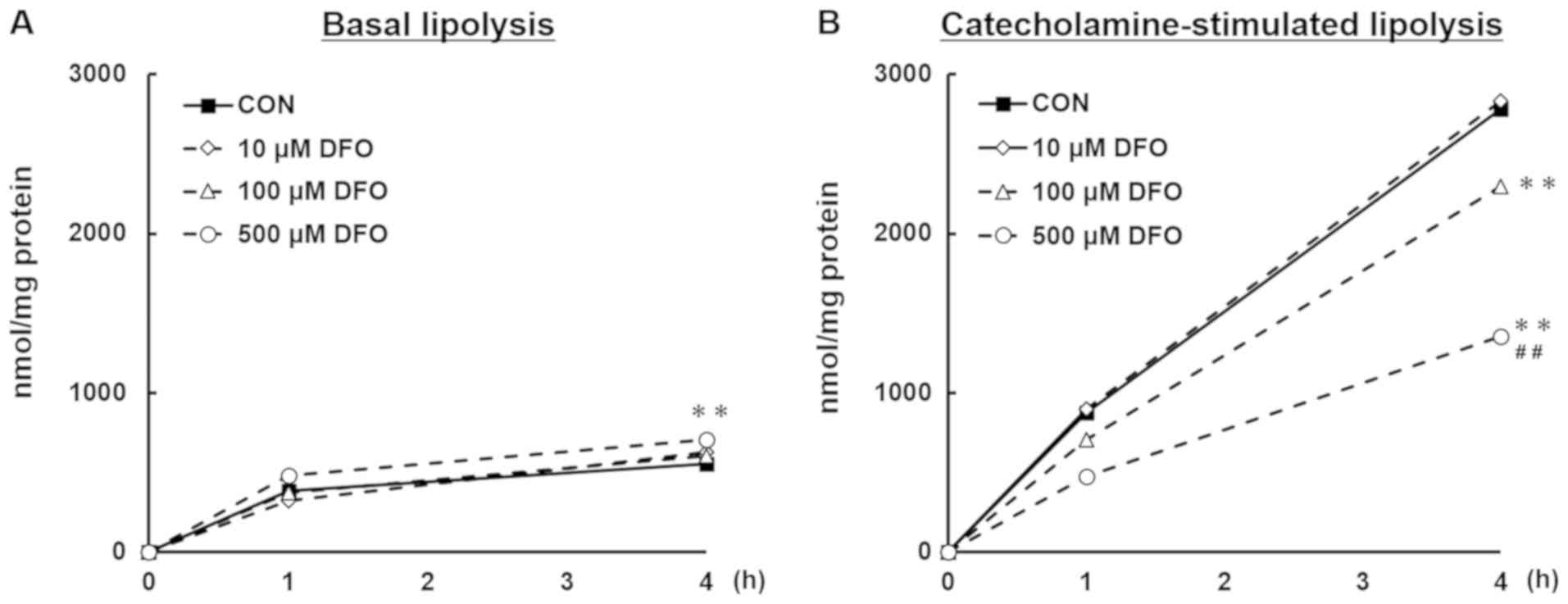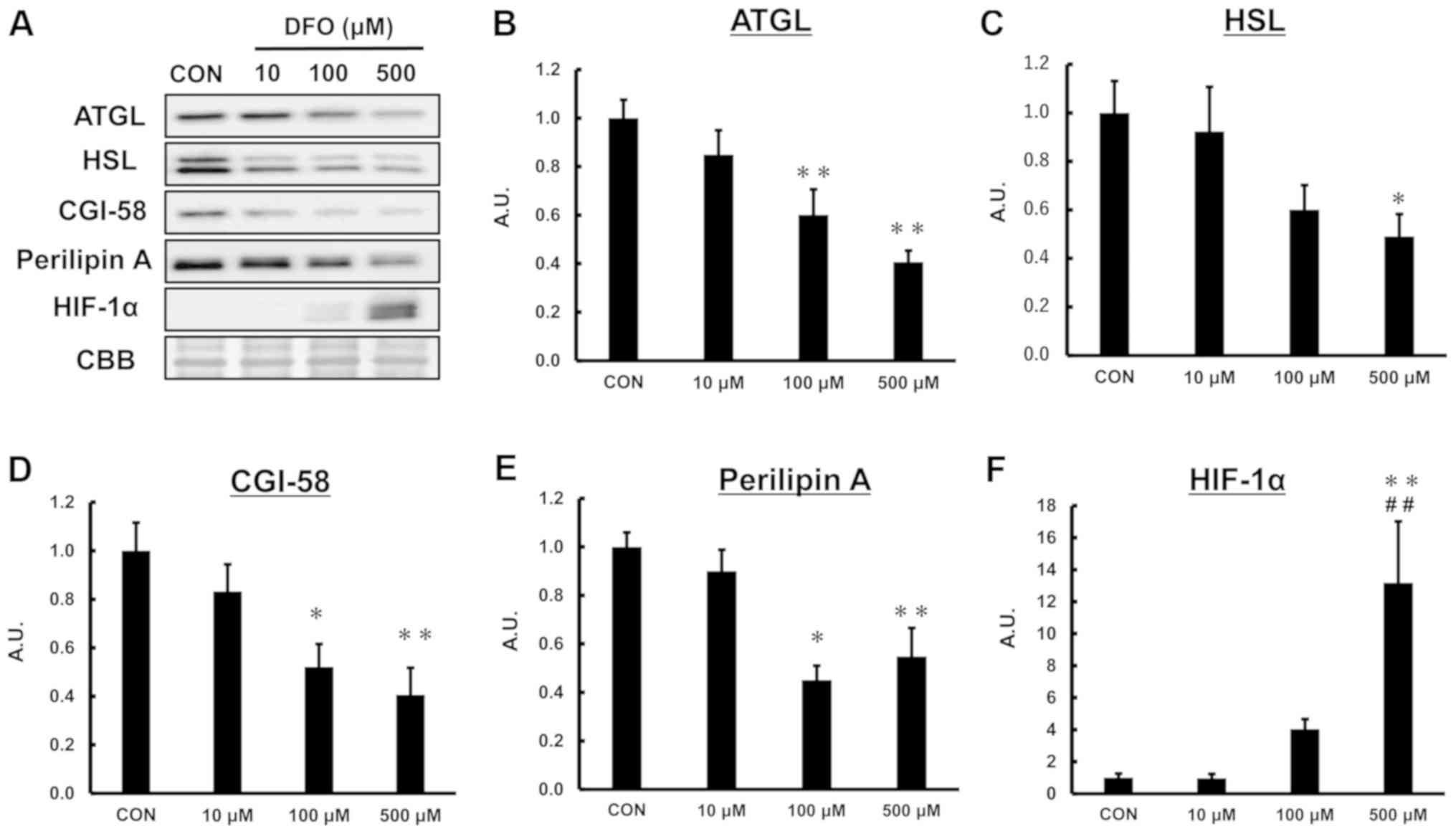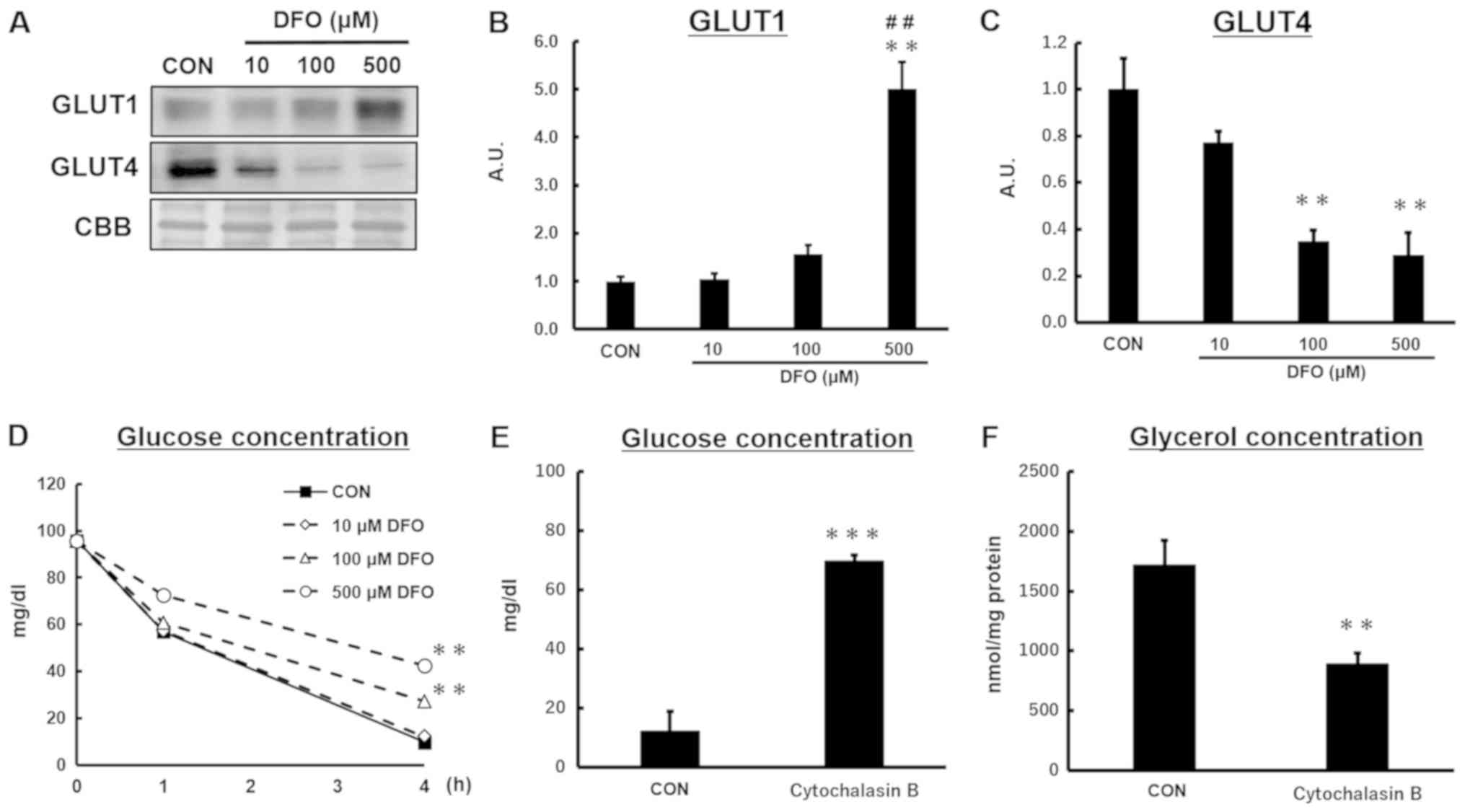|
1
|
Haemmerle G, Lass A, Zimmermann R,
Gorkiewicz G, Meyer C, Rozman J, Heldmaier G, Maier R, Theussl C,
Eder S, et al: Defective lipolysis and altered energy metabolism in
mice lacking adipose triglyceride lipase. Science. 312:734–737.
2006. View Article : Google Scholar : PubMed/NCBI
|
|
2
|
Lefèvre C, Jobard F, Caux F, Bouadjar B,
Karaduman A, Heilig R, Lakhdar H, Wollenberg A, Verret JL,
Weissenbach J, et al: Mutations in CGI-58, the gene encoding a new
protein of the esterase/lipase/thioesterase subfamily, in
Chanarin-Dorfman syndrome. Am J Hum Genet. 69:1002–1012. 2001.
View Article : Google Scholar : PubMed/NCBI
|
|
3
|
Radner FP, Streith IE, Schoiswohl G,
Schweiger M, Kumari M, Eichmann TO, Rechberger G, Koefeler HC, Eder
S, Schauer S, et al: Growth retardation, impaired triacylglycerol
catabolism, hepatic steatosis, and lethal skin barrier defect in
mice lacking comparative gene identification-58 (CGI-58). J Biol
Chem. 285:7300–7311. 2010. View Article : Google Scholar : PubMed/NCBI
|
|
4
|
Langin D, Dicker A, Tavernier G, Hoffstedt
J, Mairal A, Rydén M, Arner E, Sicard A, Jenkins CM, Viguerie N, et
al: Adipocyte lipases and defect of lipolysis in human obesity.
Diabetes. 54:3190–3197. 2005. View Article : Google Scholar : PubMed/NCBI
|
|
5
|
Steinberg GR, Kemp BE and Watt MJ:
Adipocyte triglyceride lipase expression in human obesity. Am J
Physiol Endocrinol Metab. 293:E958–E964. 2007. View Article : Google Scholar : PubMed/NCBI
|
|
6
|
Cighetti G, Duca L, Bortone L, Sala S,
Nava I, Fiorelli G and Cappellini MD: Oxidative status and
malondialdehyde in beta-thalassaemia patients. Eur J Clin Invest.
32 (Suppl 1):55–60. 2002. View Article : Google Scholar : PubMed/NCBI
|
|
7
|
Yan HF, Liu ZY, Guan ZA and Guo C:
Deferoxamine ameliorates adipocyte dysfunction by modulating iron
metabolism in ob/ob mice. Endocr Connect. 7:604–616. 2018.
View Article : Google Scholar : PubMed/NCBI
|
|
8
|
Zhao L, Zhang X, Shen Y, Fang X, Wang Y
and Wang F: Obesity and iron deficiency: A quantitative
meta-analysis. Obes Rev. 16:1081–1093. 2015. View Article : Google Scholar : PubMed/NCBI
|
|
9
|
Moayeri H, Bidad K, Zadhoush S, Gholami N
and Anari S: Increasing prevalence of iron deficiency in overweight
and obese children and adolescents (Tehran Adolescent Obesity
Study). Eur J Pediatr. 165:813–814. 2006. View Article : Google Scholar : PubMed/NCBI
|
|
10
|
Nead KG, Halterman JS, Kaczorowski JM,
Auinger P and Weitzman M: Overweight children and adolescents: A
risk group for iron deficiency. Pediatrics. 114:104–108. 2004.
View Article : Google Scholar : PubMed/NCBI
|
|
11
|
Pinhas-Hamiel O, Newfield RS, Koren I,
Agmon A, Lilos P and Phillip M: Greater prevalence of iron
deficiency in overweight and obese children and adolescents. Int J
Obes Relat Metab Disord. 27:416–418. 2003. View Article : Google Scholar : PubMed/NCBI
|
|
12
|
Wenzel BJ, Stults HB and Mayer J:
Hypoferraemia in obese adolescents. Lancet. 2:327–328. 1962.
View Article : Google Scholar : PubMed/NCBI
|
|
13
|
Bagni UV, Luiz RR and Veiga GV: Overweight
is associated with low hemoglobin levels in adolescent girls. Obes
Res Clin Pract. 7:e218–e229. 2013. View Article : Google Scholar : PubMed/NCBI
|
|
14
|
Park CY, Chung J, Koo KO, Kim MS and Han
SN: Hepatic iron storage is related to body adiposity and hepatic
inflammation. Nutr Metab (Lond). 14:142017. View Article : Google Scholar : PubMed/NCBI
|
|
15
|
Yamagishi H, Okazaki H, Shimizu M, Izawa T
and Komabayashi T: Relationships among serum triacylglycerol, fat
pad weight, and lipolysis in iron-deficient rats. J Nutr Biochem.
11:455–460. 2000. View Article : Google Scholar : PubMed/NCBI
|
|
16
|
Hashimoto T, Segawa H, Okuno M, Kano H,
Hamaguchi HO, Haraguchi T, Hiraoka Y, Hasui S, Yamaguchi T, Hirose
F, et al: Active involvement of micro-lipid droplets and
lipid-droplet-associated proteins in hormone-stimulated lipolysis
in adipocytes. J Cell Sci. 125:6127–6136. 2012. View Article : Google Scholar : PubMed/NCBI
|
|
17
|
Yamaguchi T, Omatsu N, Morimoto E,
Nakashima H, Ueno K, Tanaka T, Satouchi K, Hirose F and Osumi T:
CGI-58 facilitates lipolysis on lipid droplets but is not involved
in the vesiculation of lipid droplets caused by hormonal
stimulation. J Lipid Res. 48:1078–1089. 2007. View Article : Google Scholar : PubMed/NCBI
|
|
18
|
Borel MJ, Beard JL and Farrell PA: Hepatic
glucose production and insulin sensitivity and responsiveness in
iron-deficient anemic rats. Am J Physiol. 264:E380–E390.
1993.PubMed/NCBI
|
|
19
|
Han DH, Hancock CR, Jung SR, Higashida K,
Kim SH and Holloszy JO: Deficiency of the mitochondrial electron
transport chain in muscle does not cause insulin resistance. PLoS
One. 6:e197392011. View Article : Google Scholar : PubMed/NCBI
|
|
20
|
Hashimoto T, Yokokawa T, Endo Y, Iwanaka
N, Higashida K and Taguchi S: Modest hypoxia significantly reduces
triglyceride content and lipid droplet size in 3T3-L1 adipocytes.
Biochem Biophys Res Commun. 440:43–49. 2013. View Article : Google Scholar : PubMed/NCBI
|
|
21
|
Granneman JG, Moore HP, Krishnamoorthy R
and Rathod M: Perilipin controls lipolysis by regulating the
interactions of AB-hydrolase containing 5 (Abhd5) and adipose
triglyceride lipase (Atgl). J Biol Chem. 284:34538–34544. 2009.
View Article : Google Scholar : PubMed/NCBI
|
|
22
|
Granneman JG and Moore H-PH: Location,
location: Protein trafficking and lipolysis in adipocytes. Trends
Endocrinol Metab. 19:3–9. 2008. View Article : Google Scholar : PubMed/NCBI
|
|
23
|
Zechner R, Kienesberger PC, Haemmerle G,
Zimmermann R and Lass A: Adipose triglyceride lipase and the
lipolytic catabolism of cellular fat stores. J Lipid Res. 50:3–21.
2009. View Article : Google Scholar : PubMed/NCBI
|
|
24
|
Datz C, Felder TK, Niederseer D and Aigner
E: Iron homeostasis in the metabolic syndrome. Eur J Clin Invest.
43:215–224. 2013. View Article : Google Scholar : PubMed/NCBI
|
|
25
|
Bakar MH, Sarmidi MR, Kai CK, Huri HZ and
Yaakob H: Amelioration of mitochondrial dysfunction-induced insulin
resistance in differentiated 3T3-L1 adipocytes via inhibition of
NF-κB pathways. Int J Mol Sci. 15:22227–22257. 2014. View Article : Google Scholar : PubMed/NCBI
|
|
26
|
Marques AP, Rosmaninho-Salgado J, Estrada
M, Cortez V, Nobre RJ and Cavadas C: Hypoxia mimetic induces lipid
accumulation through mitochondrial dysfunction and stimulates
autophagy in murine preadipocyte cell line. Biochim Biophys Acta
Gen Subj. 1861:673–682. 2017. View Article : Google Scholar : PubMed/NCBI
|
|
27
|
Wood IS, Wang B, Lorente-Cebrián S and
Trayhurn P: Hypoxia increases expression of selective facilitative
glucose transporters (GLUT) and 2-deoxy-D-glucose uptake in human
adipocytes. Biochem Biophys Res Commun. 361:468–473. 2007.
View Article : Google Scholar : PubMed/NCBI
|
|
28
|
Varela-Guruceaga M, Milagro FI, Martínez
JA and de Miguel C: Effect of hypoxia on caveolae-related protein
expression and insulin signaling in adipocytes. Mol Cell
Endocrinol. 473:257–267. 2018. View Article : Google Scholar : PubMed/NCBI
|
|
29
|
Weiszenstein M, Musutova M, Plihalova A,
Westlake K, Elkalaf M, Koc M, Prochazka A, Pala J, Gulati S, Trnka
J, et al: Adipogenesis, lipogenesis and lipolysis is stimulated by
mild but not severe hypoxia in 3T3-L1 cells. Biochem Biophys Res
Commun. 478:727–732. 2016. View Article : Google Scholar : PubMed/NCBI
|
|
30
|
Fink T, Abildtrup L, Fogd K, Abdallah BM,
Kassem M, Ebbesen P and Zachar V: Induction of adipocyte-like
phenotype in human mesenchymal stem cells by hypoxia. Stem Cells.
22:1346–1355. 2004. View Article : Google Scholar : PubMed/NCBI
|
|
31
|
Lin Q, Lee YJ and Yun Z: Differentiation
arrest by hypoxia. J Biol Chem. 281:30678–30683. 2006. View Article : Google Scholar : PubMed/NCBI
|
|
32
|
Park YS, Huang Y, Park YJ, David AE, White
L, He H, Chung HS and Yang VC: Specific down regulation of 3T3-L1
adipocyte differentiation by cell-permeable antisense
HIF1alpha-oligonucleotide. Control Release. 144:82–90. 2010.
View Article : Google Scholar
|
|
33
|
Yun Z, Maecker HL, Johnson RS and Giaccia
AJ: Inhibition of PPAR gamma 2 gene expression by the
HIF-1-regulated gene DEC1/Stra13: A mechanism for regulation of
adipogenesis by hypoxia. Dev Cell. 2:331–341. 2002. View Article : Google Scholar : PubMed/NCBI
|
|
34
|
Kim KH, Song MJ, Chung J, Park H and Kim
JB: Hypoxia inhibits adipocyte differentiation in a
HDAC-independent manner. Biochem Biophys Res Commun. 333:1178–1184.
2005. View Article : Google Scholar : PubMed/NCBI
|
|
35
|
Gabrielsen JS, Gao Y, Simcox JA, Huang J,
Thorup D, Jones D, Cooksey RC, Gabrielsen D, Adams TD, Hunt SC, et
al: Adipocyte iron regulates adiponectin and insulin sensitivity. J
Clin Invest. 122:3529–3540. 2012. View
Article : Google Scholar : PubMed/NCBI
|
|
36
|
Boudina S and Graham TE: Mitochondrial
function/dysfunction in white adipose tissue. Exp Physiol.
99:1168–1178. 2014. View Article : Google Scholar : PubMed/NCBI
|
|
37
|
Fassina G, Dorigo P and Gaion RM:
Equilibrium between metabolic pathways producing energy: A key
factor in regulating lipolysis. Pharmacol Res Commun. 6:1–21. 1974.
View Article : Google Scholar : PubMed/NCBI
|
|
38
|
Rensvold JW, Krautkramer KA, Dowell JA,
Denu JM and Pagliarini DJ: Iron Deprivation Induces Transcriptional
Regulation of Mitochondrial Biogenesis. J Biol Chem.
291:20827–20837. 2016. View Article : Google Scholar : PubMed/NCBI
|
|
39
|
Rensvold JW, Ong SE, Jeevananthan A, Carr
SA, Mootha VK and Pagliarini DJ: Complementary RNA and protein
profiling identifies iron as a key regulator of mitochondrial
biogenesis. Cell Rep. 3:237–245. 2013. View Article : Google Scholar : PubMed/NCBI
|


















